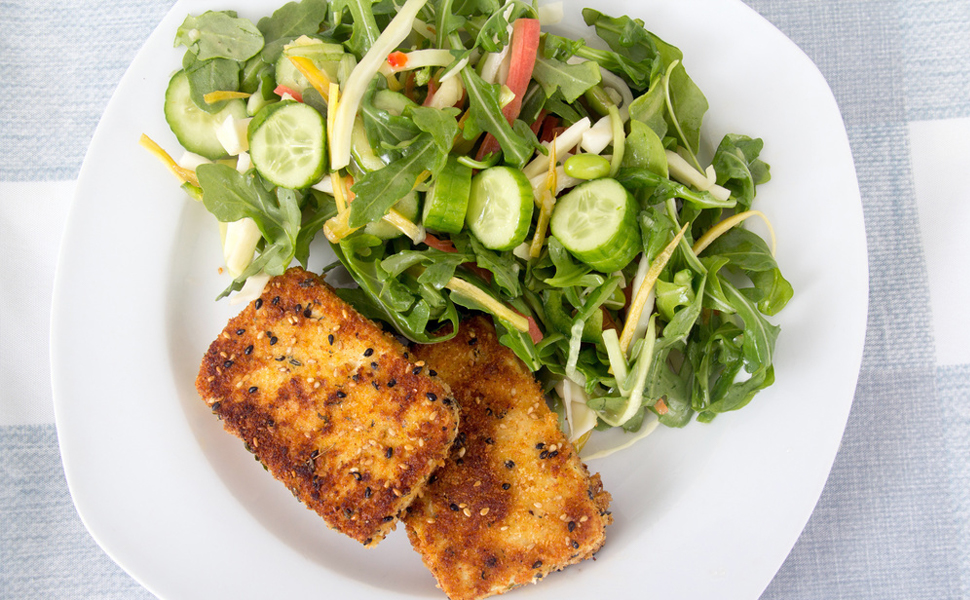The best part about being on the Keyto program is that you can eat delicious foods and lose weight without the hassle of tracking what you are eating. Importantly, this does not mean you can eat unlimited quantities of food.
To know how much to eat, we recommend a 3 step approach:
- Use the food search: This means to look up foods using the Keyto food search. Eat primarily Green-rated foods. Try to understand what a serving of each food is. Just because a food is Green does not mean you can eat unlimited quantities and lose weight. It is not necessary to count calories, but it is helpful to understand portions as well as the number of net carbs in a serving of each food or recipe. All of this information can be found in the Keyto food search. Use it!
- Use your Gut: This means you should eat until you are full, then stop. You should avoid mindless eating i.e. eating/snacking when not hungry. However, you should not suffer from hunger (which will not happen if you eat high healthy fat foods).
- Use your Keyto: This means to blow into your Keyto to get feedback on how your eating habits are affecting your body. Aim to keep your level high and learn from times when your level falls. The Keyto is a great detector for hidden carbs in items like sauces and dressings.
More on Portion Sizes
Although Keyto does not require you to track calories with an app or spreadsheet, you should still be sensible about the quantity of food you eat. All foods contain calories, and even Green-badged foods can lead to weight gain if eaten in excess. Portion sizes do matter.
As for net carbs, we recommend aiming for 30g of net carbs or less per day. The exact number will depend on factors such as your size, how much you exercise, and how long you have been on the program, but 30g is a good starting point. Use your Keyto and weight loss progress to adjust your net carb target up or down. Also don’t forget about keeping your protein intake moderate. Too much protein is one of the most common causes for people to stall in terms of weight loss or Keyto level.
Let’s take a look at some Keyto food search entries and how best to use the information.
Pecans
Serving size: 25 nuts, 258 calories, 2g net carbs

Pecans are great for a Heart Healthy ketogenic diet and are satiating due to their high healthy-fat content. They’ll also help boost your Keyto level.
However eating more than a handful can total over 400 calories. Depending on your size and goals, this could be the equivalent of a full meal. Remember to pay attention to serving size when snacking on pecans or other nuts and seeds.
Broccoli
Serving size: 1 cup, 32 calories, 4g net carbs

Broccoli is full of vitamins, nutrients, and fiber, but is also very low in calories compared to pecans. Broccoli’s low caloric density makes it a great way to add bulk to your meals which promotes satiety. As a result, portion size isn’t as much a concern as with other higher calorie foods. Consider that doubling the servings of broccoli only adds another 32 calories! But also remember that broccoli does have 4 grams of net carbs per cup. A great play is to roast with olive oil or dip in guacamole to boost healthy fats and satiety.
Pesto Shirataki Noodles
Serving size: 1/4 of the recipe, 190 calories, 6g net carbs

This delicious, low-carb recipe is quite filling due to the fat content (20g per serving) while also low in total calories. You’ll feel full while only eating a moderate amount of calories and have the added benefit of boosting your Keyto level.
Chocolate Covered Strawberries
Serving size: 2 strawberries, 65 calories, 2g net carbs

Chocolate covered strawberries (made with vegan, no sugar added chocolate chips) are a great dessert to cap a meal. However, as a reminder, portion must be considered. While having a couple strawberries is perfectly ok, eating the whole batch would not be great for your Keyto level.
Conclusion
The Keyto food search has all the information you will need to make the best decisions about which foods to eat. Remember to pay attention to serving sizes and the associated calories and use your Keyto for feedback.

